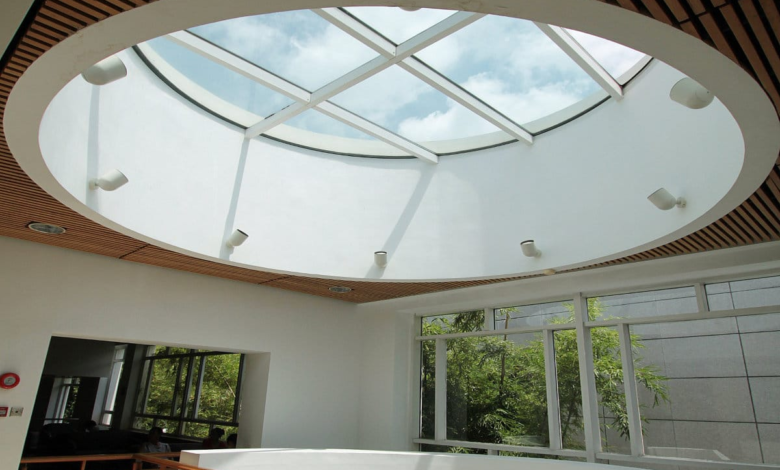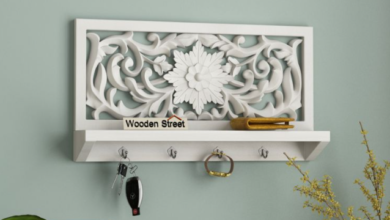Commercial Dome Rooflights: Brightening Spaces with Form and Function

Daylighting is one of the most effective strategies in modern architecture, blending design, sustainability, and human well-being. Among the various ways to introduce natural light into large buildings, dome rooflights stand out as both practical and visually distinctive. These curved, elevated structures are designed to capture sunlight from multiple angles and distribute it evenly indoors. In commercial environments such as shopping centres, warehouses, hospitals, schools, and offices, dome rooflights have become more than decorative features. They are essential components that enhance energy efficiency, improve comfort, and add architectural value to buildings.
This article explores commercial dome rooflights in detail, examining their design, benefits, materials, installation, applications, and the emerging trends shaping their future.
What Are Commercial Dome Rooflights?
A dome rooflight is a curved or bubble-shaped unit fitted to a flat or low-pitched roof to bring natural daylight into a building. Unlike flat skylights, which only admit light from above, dome rooflights capture sunlight from several directions throughout the day. Their rounded form ensures that natural light continues to enter even when the sun is at a low angle, making them particularly effective in regions with variable weather or changing seasons.
Commercial dome rooflights differ from residential ones in terms of size, materials, and performance. They are built to meet higher structural standards, withstand heavier loads, and comply with regulations on fire safety, insulation, and energy efficiency. These rooflights can be installed as single units or as part of modular systems across larger roof areas.
The Role of Dome Rooflights in Commercial Architecture
Natural light is a key element in commercial architecture. For staff, it creates healthier, more productive workspaces. For customers and visitors, it enhances comfort and atmosphere. For building owners, it reduces operational costs and supports environmental targets.
Dome rooflights are particularly valuable because they capture sunlight from multiple directions, unlike flat rooflights that can create uneven lighting. This ensures consistent illumination throughout the day, reducing shadows and maintaining a bright, welcoming environment. Their raised design also helps drain rainwater and snow more effectively, minimising the risk of leaks and pooling. This makes them especially suitable for large-scale commercial and industrial buildings.
See also: Enhancing Outdoor Living: Why WPC Composite Decking Is the Sustainable Future.
Benefits of Commercial Dome Rooflights
The advantages of dome rooflights span across energy savings, aesthetics, and occupant well-being. By allowing abundant natural daylight into interior spaces, they reduce the need for artificial lighting, leading to significant cost savings. When manufactured with high-performance glazing, dome rooflights also help to regulate indoor temperatures, lowering both heating and cooling demands.
Daylight has been proven to boost mood, productivity, and overall well-being. In offices, access to natural light has been linked to higher job satisfaction and reduced absenteeism. In retail spaces, bright, naturally lit environments encourage customers to stay longer and engage more. In healthcare settings, daylight supports patient recovery and reduces stress. Dome rooflights therefore play a vital role in creating healthier, more sustainable buildings.
Architecturally, dome rooflights add depth and visual appeal to a building’s design. They can transform ordinary ceilings into dynamic, light-filled features that enhance both functionality and aesthetics.
Materials and Design of Dome Rooflights
The performance and longevity of dome rooflights depend on their materials and design. Most commercial models are constructed using polycarbonate, acrylic, or glass.
Polycarbonate is widely used because it is lightweight, strong, and resistant to impact and harsh weather. It provides excellent light transmission and can be treated to block UV rays. Acrylic is another popular option, offering high clarity and resistance to yellowing. Glass dome rooflights, though heavier, are ideal for premium architectural projects, offering superior optical quality, insulation, and durability.
Many designs include double or triple layers to improve thermal insulation and reduce condensation. Dome shapes vary from hemispherical and pyramidal to fully customised designs, allowing architects to integrate them seamlessly into modern building styles.
Installation Considerations
Installing dome rooflights requires careful planning. Their position on the roof determines how effectively light spreads throughout the space. Even spacing across large areas ensures balanced illumination and reduces reliance on electric lighting.
Climate and building orientation must also be taken into account. In warmer regions, shading or reflective coatings help minimise solar gain. In colder climates, insulated frames and multi-layer glazing prevent heat loss and condensation.
Structural stability is another critical factor. Dome rooflights must be securely mounted to withstand wind, snow, and temperature changes. Many come with built-in upstands for easier installation and improved waterproofing.
Maintenance access should also be considered. Although dome rooflights are generally low-maintenance, regular cleaning is important to maintain clarity and performance.
Applications of Dome Rooflights
The versatility of dome rooflights makes them suitable for a wide range of commercial environments.
- In warehouses and factories, they deliver cost-effective daylighting across large floor areas, reducing electricity consumption. In retail settings, they create bright, attractive interiors that enhance the shopping experience.
- Offices benefit from improved daylight levels, which promote productivity and well-being. Healthcare and educational facilities use dome rooflights to create calming, naturally lit environments conducive to recovery and learning.
- Public buildings such as airports, museums, and sports centres use dome rooflights to brighten large open spaces and improve energy performance. Many developers choose Skylights Roof Lanterns for bespoke dome rooflight systems that combine elegance with durability.
Challenges and Limitations
While dome rooflights offer many advantages, there are challenges to consider. Poor design or installation can lead to glare or overheating, particularly in very sunny climates. Inadequate sealing or insulation may also result in heat loss or water ingress.
To prevent these issues, professional installation and routine inspections are essential. Though maintenance requirements are minimal, occasional cleaning helps maintain optimal light transmission and appearance.
Cost is another consideration. High-quality dome rooflights can be more expensive initially, but their long-term energy savings and productivity benefits usually outweigh the upfront investment.
Innovations and Future Trends
Modern innovations are shaping the future of dome rooflights. Smart glazing technologies, such as electrochromic glass, allow the tint to adjust automatically in response to sunlight, reducing glare and solar heat gain. Some designs incorporate photovoltaic panels, generating renewable energy while still providing natural light.
Manufacturing advancements now make it possible to produce custom-shaped rooflights and integrate them with ventilation systems. The growing trend of biophilic design is also influencing their development, promoting stronger connections between people and the natural environment. Products from Skylights Roof Lanterns exemplify this shift towards sustainable, human-focused architectural solutions.
Costs and Return on Investment
The cost of dome rooflights varies depending on size, material, and design complexity. Polycarbonate options are usually the most affordable, while glass and multi-layer units sit at the premium end. Installation costs depend on roof structure and accessibility.
Despite the initial outlay, dome rooflights typically deliver strong returns through reduced energy bills and improved occupant satisfaction. They also contribute to sustainability certifications, boosting a property’s value and environmental credentials.
Conclusion
Commercial dome rooflights are more than practical roof features; they are essential elements of modern architecture that enhance energy performance, occupant comfort, and design appeal. By capturing and distributing sunlight effectively, they transform workplaces, retail areas, and public buildings into bright, welcoming, and sustainable spaces.
As materials and technology continue to evolve, dome rooflights are becoming even more efficient and adaptable. For architects, builders, and business owners looking to combine sustainability with design excellence, dome rooflights offer a clear, forward-thinking solution.





